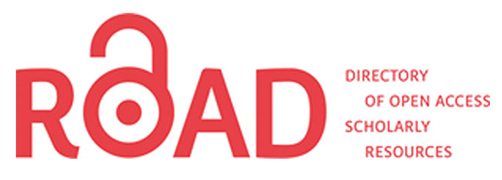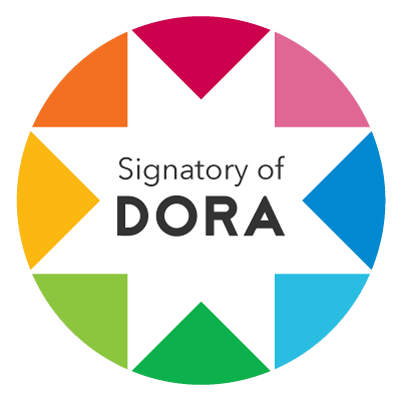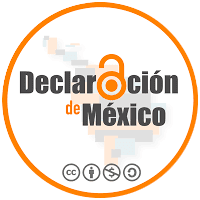Musical Orality and Technology. Musical Orality and Technology Denaturing the Score As a Way of Thinking Music
DOI:
https://doi.org/10.24215/24691488e040Keywords:
Orality, technology, music, musical notation, digital oralityAbstract
The need for new epistemologies for the study of music is frequently pointed out, especially in reference to musical practices that do not use or partially use notation. It is proposed here to think about music within the framework of an expanded idea of orality as a counterpart to the habitual understanding based on writing. Attending to musical orality practices that transcend what we can objectify in the score leads us to focus our analysis on performance and social interaction as spaces for the construction of meaning. We intend to reflect on the idea of score as technology, and later on the role of recording technologies and digital technology in that they configure different forms of musical orality.Downloads
References
Auslander, P. (2006). Musical Personae. The Drama Review, 50(1), 100-119.
Berliner, P. (1994). Thinking in Jazz: The Infinite Art of Improvisation. Chicago, Estados Unidos:University of Chicago Press.
Bohlman, P. (2001). Ontologies of Music. En N. Cook y M. Everist (Eds.), Rethinking Music (pp. 17-34). Oxford, Inglaterra: Oxford University Press.
Born, G. (2005). On Musical Mediation: Ontology, Technology and Creativity. Twentieth Century Music, 2(1), 7-36. doi:10.1017/S147857220500023X
Cook, N. (1999). Analysing Performance and Performing Analysis. En N. Cook y M. Everist (Eds.) Rethinking Music. (pp. 239-261). Oxford, Reino Unido: Oxford University Press.
Cook, N. (2003). Music as Performance. En M. Clayton, T. Herbert y R. Middleton (Eds), The Cultural Study of Music. A Critical Introduction (pp. 204-214). Londres, Inglaterra: Routledge.
Cutler, C. (1984). Technology, Politics, and Contemporary Music: Necessity and Choice in Musical Forms. Popular Music, 4, 279–300. doi: 10.1017/S0261143000006267
Goehr, L. (1992). The Imaginary Museum of Musical Works: An Essay in the Philosophy of Music. Oxford, Inglaterra: Oxford University Press.
Johnson, M. (2007). The Meaning of the Body. Aesthetics of Human Understanding. Chicago, Estados Unidos: The University of Chicago Press.
Jousse, M. (1978). Le Parlant, la parole, et le souffle. París, Francia: Gallimard.
Kealy, E. R. (1979). From craft to art: the case of sound mixers and popular music. Sociology of Work and Occupations, 6(1), 3-29. doi: 10.1177/009392857961001
Lerdahl, F. y Jackendoff, R. (1983). A Generative Theory of Tonal Music. Cambridge, Estados Unidos: MIT Press.
Logan, R. K. (2010). Understanding New Media: Extending Marshall McLuhan. Nueva York, Estados Unidos: Peter Lang.
Martínez, I. C. (2017). Hacer sentido con el cuerpo en la música. La realidad ampliada de la cognición musical. Revista Argentina de Musicología, (19), 43-58. Recuperado de http://sedici.unlp.edu.ar/handle/10915/77482
Mithen, S. J. (2005). The singing Neanderthals: The origins of music, language, mind and body. Londres, Inglaterra: Weidenfeld & Nicholson.
Monson, I. (1996). Saying Something: Jazz Improvisation and Interaction. Chicago, Estados Unidos: University of Chicago Press.
Moran, N. (2014). Social implications arise in embodied music cognition research which can counter musicological «individualism». Frontiers in Psychology, 5, 1–10. doi: 10.3389/fpsyg.2014.00676
Musumeci, O. (2002). Hacia una educación de conservatorio humanamente compatible. Actas de la Segunda Reunión Anual de SACCoM. Recuperado de http://saccom.org.ar/v2016/node/55
Narmour, E. (1990). The Analysis and Cognition of Basic Melodic Structures: The Implication-Realization Model. Chicago, Estados Unidos: University of Chicago Press.
Ong, W. J. (1982). Orality and Literacy. The Technologizing of the Word. Londres, Inglaterra: Methuen & Co Ltd.
Palominos Mandiola, S. (2014). Entre la oralidad y la escritura. La importancia de la música, danza y canto de los Andes coloniales como espacio de significación, poder y mestizajes en contextos de colonialidad. Revista musical chilena, 68(222), 35-57. Recuperado de https://revistamusicalchilena.uchile.cl/index.php/RMCH/article/view/35910
Salah, F. (2007). Algunos aspectos de la oralidad musical en el Magreb. Revista Oráfrica, 3, 15-34. Recuperado de https://www.raco.cat/index.php/Orafrica/article/view/136766/186955
Sau, V. (1972). Historia antropológica de la canción. Barcelona, España: Ediciones Picazo.
Taylor, T. D. (2001). Strange Sounds. Music, Technology and Culture. Londres, Inglaterra: Routledge.
Théberge, P. (1989). The «Sound» of Music: Technological Rationalisation and the Production of Popular Music. New Formations, 8, 99-111.
Tokumaru, Y. y Yamaguti, O. (1986). The Oral and Literate in Music. Tokyo, Japón: Academic Music.
Toynbee, J. (2006). Copyright, the Work and Phonographic Orality. Music Social and Legal Studies, 15(1), 77-99. doi: 10.1177/0964663906060976
Treitler, L. (1981). Oral, Written, and Literate Process in the Transmission of Medieval Music. Speculum, 56(3), 471-491.
Downloads
Published
How to Cite
Issue
Section
License
The acceptance of the manuscript by the magazine means the non-exclusive cession of the property rights of the authors in favour of the editor, who allows the reuse, after publication (post print), under a license Attribution-NonCommercial-NoDerivatives 4.0 International. According to these terms, the material can be copied and redistributed by any means or in any format as long as a) the author and original source of the publication are quoted (magazine and URL of the work), access to the license is provided and whether changes have been made is mentioned; and b) the material is not used for commercial purposes.
The cession of non-exclusive rights means that after the publication (post print) in Arte e Investigación the authors can publish their work in any language, means and format; in such cases it must be mentioned that the material was originally published in this magazine. Such cession also means the authorization of the authors for the work to be collected by SEDICI, the institutional archive of the National University of La Plata, and to be spread in the databases that the editorial team considers appropriate to increase the visibility of the publication and its authors.
Moreover, the magazine encourages the authors to deposit their productions in other institutional and thematic archives under the principle that offering the society the scientific and academic production without any restrictions contributes to a greater exchange of the global knowledge.


































